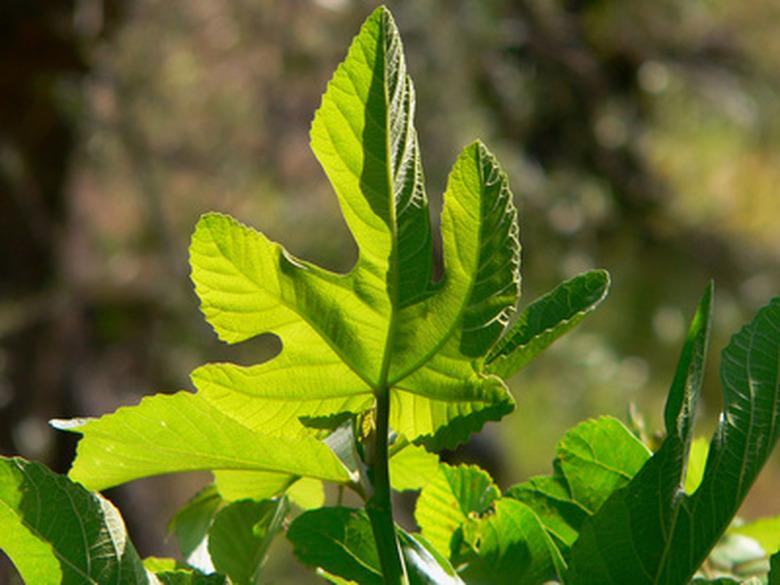How To Identify The Male Fig Tree Plant
Fig, known botanically as the genus Ficus carica, are flowering and/or fruiting trees and shrubs known, in part, for the milky latex that runs through them. Edible species of figs include Smyrna and San Pedro varieties. The fig fruit as we know it is actually a syconium, or an inside-out flower with the reproductive structures making up the interior fruit flesh. All edible figs have male and female flowers, but only Caprifig is considered to be a male tree, according to the University of Georgia. Caprifig has inedible fruit and is used exclusively to pollinate other edible figs, while female trees produce edible fruit.
Step 1
Look for five stamens that stick out of the bottom of the fruit surrounded by petal-less, outward-facing bracts of tissue that's similar to that of the fruit skin to identify a male caprifig. Stamens do not protrude out of the synconium on female trees.
Step 2
Observe the timing and repeat of fruit development on the fig tree. Male caprifig trees have three distinct fruit crops each year. The first, called profichi, ripens in early summer. The second, mammoni, ripens in fall and the third, mamme, develops in winter and ripens in spring. Female trees only produce two harvests each year, breba that ripens in early summer and a main crop that is harvest-ready in fall.
Step 3
Open a ripe fig to inspect the interior flesh. Male caprifigs will be smaller, with thick skin and greater distance between the seeded pulp and the outer skin. The interior will not be juicy and plump, and may seem semi-hollow or desiccated. Conversely, a ripe female fig will have a relatively thin skin with the juicy pulp right up against the skin with little separation. The seeds will be prevalent but the tissues surrounding the seeds will be moist to wet.
